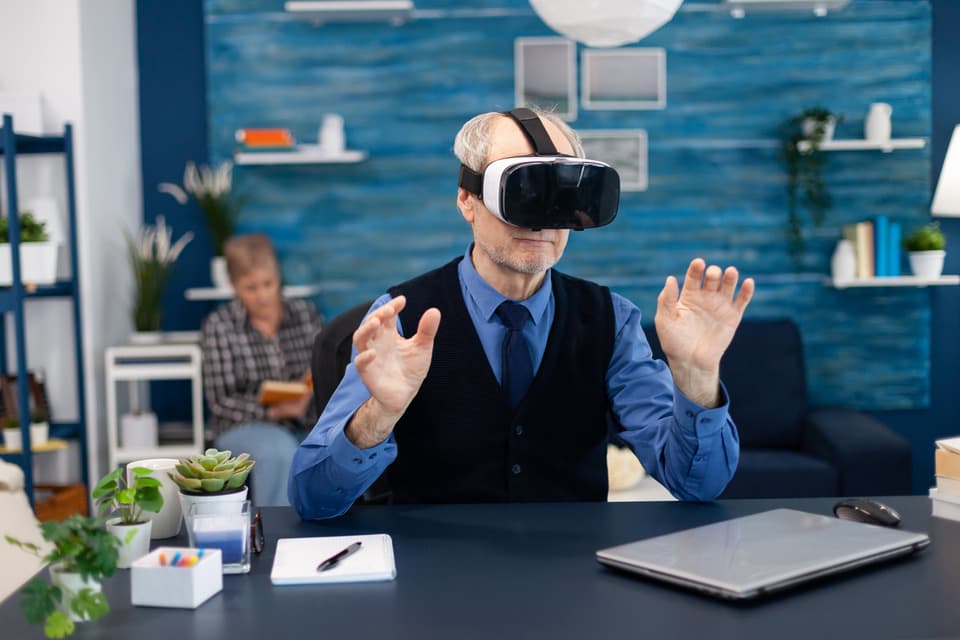The Integration of AI and Machine Learning in AR and VR
4 min read
Augmented Reality (AR) and Virtual Reality (VR) have rapidly advanced from niche technologies to powerful tools with broad applications across various industries. These immersive technologies create virtual environments that augment the physical world (AR) or immerse users in entirely virtual experiences (VR). In recent years, the integration of Artificial Intelligence (AI) and Machine Learning (ML) has further expanded the capabilities and potential of AR and VR, enhancing interaction, personalization, and realism. This blog explores how AI and ML are revolutionizing AR and VR, the challenges they address, and the exciting possibilities they offer for the future.
Understanding AI and Machine Learning
AI refers to the simulation of human intelligence in machines that can perform tasks that typically require human intelligence, such as visual perception, speech recognition, decision-making, and language translation. Machine Learning, a subset of AI, focuses on algorithms and statistical models that allow computers to learn from and make predictions or decisions based on data, without explicit programming.
Key aspects of AI and Machine Learning include:
- Computer Vision: AI algorithms analyze visual data to identify objects, interpret scenes, and understand spatial relationships, essential for AR and VR applications.
- Natural Language Processing (NLP): NLP enables machines to understand and generate human language, facilitating interaction and communication in virtual environments.
- Predictive Analytics: ML models analyze data patterns to make predictions and optimize user experiences in AR and VR applications.
Applications of AI and Machine Learning in AR and VR
- Enhanced User Interaction and Personalization
AI and ML algorithms enable personalized user experiences in AR and VR environments. By analyzing user behavior, preferences, and interactions, these technologies can adapt content, recommendations, and interactions in real-time. For example, in AR applications, AI can recognize gestures or facial expressions to enhance user interaction with virtual elements, creating more intuitive and engaging experiences.
- Object Recognition and Scene Understanding
Computer vision powered by AI enhances object recognition and scene understanding in AR and VR. AI algorithms can identify and classify objects in the user’s environment, allowing AR applications to overlay relevant information or interactive elements. In VR, AI-driven scene understanding can create realistic virtual environments based on real-world data, improving immersion and realism.
- Real-time Translation and Communication
NLP capabilities enable real-time translation of spoken or written language in AR and VR environments, breaking down language barriers and facilitating global collaboration and communication. AI-powered virtual assistants can also provide contextual information or guidance based on user queries, enhancing productivity and user satisfaction.
- Gesture Recognition and Natural Interaction
AI algorithms enable gesture recognition and natural interaction in AR and VR applications. Machine learning models can interpret hand movements, facial expressions, and body gestures, allowing users to interact with virtual objects or environments intuitively. This capability is particularly valuable in training simulations, gaming, and virtual design applications.
- Personalized Learning and Training
In educational and training contexts, AI and ML in AR and VR enable personalized learning experiences. Adaptive learning platforms use AI to analyze learner behavior and preferences, delivering customized content, assessments, and feedback. VR simulations powered by ML can replicate real-world scenarios for training purposes, allowing learners to practice skills in a safe and controlled environment.
- Immersive Content Creation and Adaptation
AI and ML algorithms aid in content creation and adaptation for AR and VR experiences. Generative AI can automate the creation of virtual environments, characters, or interactive elements based on predefined parameters or user input. ML models can also optimize content delivery based on device capabilities, network conditions, and user context, ensuring smooth and immersive experiences.
Challenges and Considerations
While the integration of AI and Machine Learning in AR and VR offers numerous benefits, several challenges and considerations must be addressed:
- Data Privacy and Security: AI and ML rely on vast amounts of data, raising concerns about data privacy, security, and ethical use of personal information.
- Complexity and Integration: Implementing AI and ML in AR and VR requires expertise in both technologies, as well as seamless integration with existing systems and platforms.
- Performance and Latency: Real-time AI processing in AR and VR environments requires efficient algorithms and hardware optimization to minimize latency and ensure smooth user experiences.
- Bias and Fairness: AI algorithms may inherit biases from training data, impacting decision-making and interactions in AR and VR applications. Addressing bias requires careful data curation and algorithmic transparency.
Future Directions
Looking ahead, the integration of AI and Machine Learning in AR and VR is expected to drive further innovation and transformation across industries:
- Healthcare: AI-powered diagnostic tools in AR for medical imaging and surgery simulations.
- Retail: Personalized shopping experiences in VR with AI-driven product recommendations and virtual try-on capabilities.
- Automotive: AI-enhanced AR dashboards for real-time navigation and vehicle diagnostics.
- Entertainment: AI-generated content and dynamic storytelling in VR gaming and immersive media.
Conclusion
In conclusion, AI and Machine Learning are integral to advancing the capabilities and enhancing the user experience of AR and VR technologies. From personalized interactions and immersive simulations to real-time translation and content creation, AI-powered innovations are reshaping how we interact with virtual and augmented environments. As these technologies continue to evolve, their integration promises to unlock new opportunities for creativity, productivity, and understanding in both consumer and enterprise applications. Embracing AI and Machine Learning in AR and VR represents a significant step towards creating truly intelligent, responsive, and transformative digital experiences.



